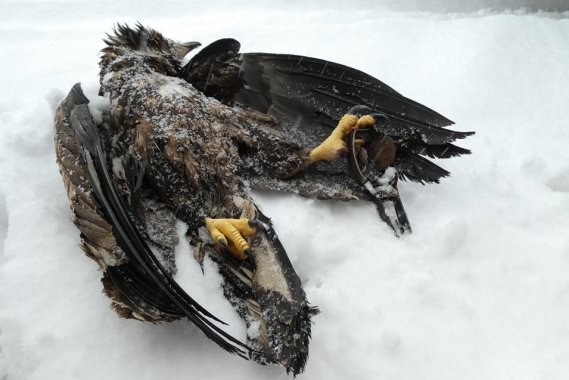Illegal Traps Threaten the Safety of Birds and Animals
In winter, when the land is covered with snow and frozen snow-crust, forest animals and birds spending winter in Latvia experience difficulties in finding feed. Uģis Bergmanis, JSC "Latvia's State Forests" (LVM) Senior Environmental Expert, quite often receives information about birds that are injured or found without any signs of life. On 7 February this year, people in Kārsava region reported a large bird with a chain around its foot.
"The bird was very hungry, so it was staying near farmsteads (which is not characteristic of wild birds) where people fed it with meat and fish. On 4 February, the big bird was caught near Kārsava, in the yard of a farmstead, where it was looking for shelter, hoping to find food; he was completely exhausted. The owner of the house brought the bird in warmth, but its forces were gone and the bird could not be saved," says the Environmental Expert.
Arriving at the scene, Uģis Bergmanis found that the injured bird was a young white-tailed sea eagle whose leg was caught in a poachers' trap: "The strong bird managed to break loose from the chain, but could not get rid of the trap that prevented it from flying and hunting freely. Obviously, someone had set the trap next to a bait to catch martens or foxes. It cost life for the young eagle."
Hunting with such traps is prohibited in the European Union since they also catch protected birds and animals that are not allowed to be caught and killed. LVM Senior Environmental Expert points out that such illegal hunting tools are particularly dangerous for wintering golden eagles and white-tailed sea eagles, northern goshawks and also for owls that winter in Latvia and live mainly on dead animals to survive the winter and the difficult conditions.
This is not the first case when Uģis Bergmanis has been informed about dead birds. This year, he had already received information about a dead golden eagle and a white-tailed sea eagle. In situations where the causes of bird death are not clearly apparent, the mortal remains of the birds found (with the financial support of LVM) are delivered to BIOR Institute for Food Safety, Animal Health and Environment for chemical and anatomical tests. Thus, it has already been established that the cause of the death of the found white-tailed sea eagle was inflammation of the lungs caused by microscopic fungus; tests also showed parasitic eggs in the body of the bird.



